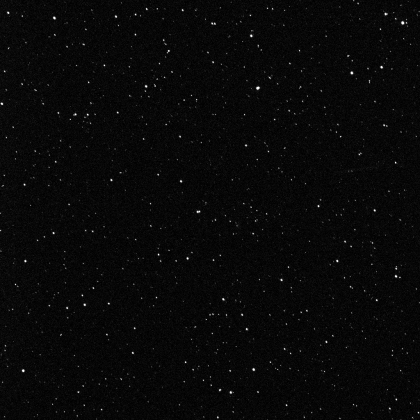
|
Press Release 5/2011
|
 |

|
Press Release 5/2011
|
 |
Press Release 5/2011 - March 21, 2011
After a hibernation period of approximately six months, the framing cameras on board NASA's space probe Dawn have now again ventured a look into the stars. The tests, which were performed by scientists from the Max Planck Institute for Solar System Research in Germany, are part of the preparations for Dawn's arrival at the asteroid Vesta at the end of July. "The camera system is working flawlessly. The dry run was a complete success", says Dr. Andreas Nathues, Framing Camera Lead Investigator.
The tests designed as a thorough check the mechanical and electrical components of the system were scheduled over three days. "Ever since the launch of the spacecraft we have performed such inspections routinely twice a year", explains Pablo Gutierrez-Marques, Framing Camera Operations Manager. This time, the tests offered a welcome opportunity also to supply the instrument with software updates. "In the past four years we were able to optimize some procedures in obtaining and processing camera data. The software updates are a reaction to these changed requirements", says Gutierrez-Marques.

|
|
Figure 1: This image taken by framing camera 2 demonstrates, that the framing cameras on board NASA's Dawn spacecraft are functioning flawlessly. |
|
(Credits: NASA/JPL-Caltech/UCLA/MPS/DLR/IDA) |
In the months to come, the system consisting of two identical cameras will contribute crucially to the mission's success. Not only will the cameras support the spacecraft's navigational system, but, once the mission arrives at its destination, Dawn's "eyes" will also create detailed images of the asteroid's surface. These are the starting points for mapping Vesta's surface and allow inferences on its mineralogical composition. In addition, the framing cameras will search for moons in Vesta's vicinity and look for evidences of former volcanic activity.
Since 2007, the space probe Dawn has been en route to the asteroid Vesta, which circles the Sun between the orbits of Mars and Jupiter. Vesta is the second most massive asteroid in our solar system and is thought to have survived from the early phase of planet formation approximately 4.5 billion years ago. Almost all other asteroids of comparable size either accumulated to form planets or broke apart due to violent collisions. For scientists, studying Vesta is therefore a journey back in time to the beginnings of our solar system. In 2015 the Dawn mission will arrive at its second destination, the asteroid Ceres.
The Dawn mission to Vesta and Ceres is managed by NASA's Jet Propulsion Laboratory (JPL), a division of the California Institute of Technology in Pasadena, for NASA's Science Mission Directorate, Washington. It is a project of the Discovery Program managed at NASA's Marshall Space Flight Center. The University of California, Los Angeles, is responsible for overall Dawn mission science. The Dawn framing cameras have been developed and built under the leadership of the Max Planck Institute for Solar System Research, Katlenburg-Lindau, Germany, with significant contributions by DLR German Aerospace Center, Institute of Planetary Research, Berlin, and in coordination with the Institute of Computer and Communication Network Engineering, Braunschweig. The Framing Camera project is funded by the Max Planck Society, DLR, and NASA/JPL.
Dr. Birgit Krummheuer
Press and Public Relations
Max Planck Institute for Solar System Research
Max-Planck-Straße 2
37191 Katlenburg-Lindau
Tel.: 05556 979 462
Fax: 05556 979 240
Mobil: 0173 3958625
Email: krummheuer![]() mps.mpg.de
mps.mpg.de
Dr. Andreas Nathues
Framing Camera Lead Investigator
Max Planck Institute for Solar System Research
Max-Planck-Straße 2
37191 Katlenburg-Lindau
Tel.: 05556 979 433
Fax: 05556 979 240
Email: nathues![]() mps.mpg.de
mps.mpg.de
Jia-Rui Cook
Press office
NASA's Jet Propulsion Laboratory
Tel.: +1 818 354-0850
Email: jccook![]() jpl.nasa.gov
jpl.nasa.gov
| © 2009, Max Planck Institute for Solar System Research, Lindau |
Presseinfo 21-03-2011 |